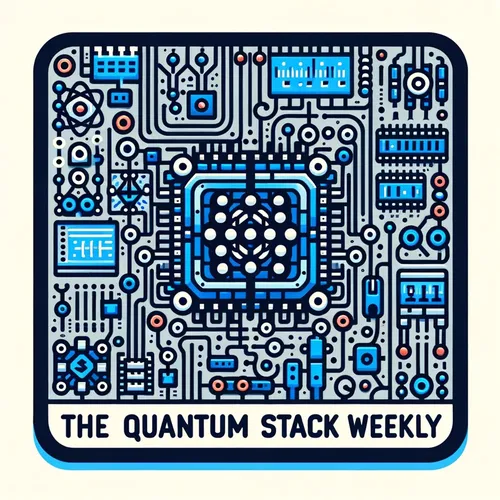Quantum Leaps: IonQ and Rigetti Optimize Power Grids, Boosting Efficiency and Resilience
- Author
- Quiet. Please
- Published
- Mon 04 Aug 2025
- Episode Link
- https://www.spreaker.com/episode/quantum-leaps-ionq-and-rigetti-optimize-power-grids-boosting-efficiency-and-resilience--67246003
This is your The Quantum Stack Weekly podcast.
Here’s Leo, your Learning Enhanced Operator, on The Quantum Stack Weekly—today, the hum you’re hearing in the world of quantum isn’t just theoretical. It’s the sound of opportunity snapping into focus, as this weekend brought seismic shifts in real-world quantum applications.
Picture this: sunlight blazing over Oak Ridge National Laboratory, and in a facility buzzing with superconducting circuits, IonQ and ORNL just announced the first quantum-driven optimization of a live power grid. Not a simulation—an operational proof, done and dusted. Quantum computation, harnessed to chase the ever-shifting flows of electrons across a complex grid, seeking the holy grail of maximum efficiency and reliability. As a quantum specialist, nothing feels more tangible than watching what used to be an NP-hard problem for classical machines—optimizing grid distribution under real-world constraints—now become practical with today’s quantum hardware.
IonQ’s CEO Niccolo de Masi called it “a significant milestone,” and project lead Suman Debnath at ORNL underscored the impact: their quantum device solved an optimization problem faster and more precisely than any classical algorithm could muster. It’s as if quantum entanglement has become an invisible hand, reaching into the heart of our nation’s energy web and gently unknotting problems that baffle even the best classical engineers.
Let me give you a sense of the environment. Inside the lab, you can almost taste the metallic tang of helium as it cools the dilution fridge to a hair’s breadth above absolute zero. Multicolored wires snake across racks, guiding microwave pulses into qubits that sit frozen and silent—until, with a flicker, they leap into superpositions, juggling possibilities that would drown a classical computer in an ocean of 1s and 0s.
What makes this week’s application leap so remarkable is the jump in scalability and error reduction. Rigetti Computing, hot on IonQ’s heels, reported a new 36-qubit processor with 99.5% gate fidelity—halving error rates and moving from hope to robust utility. These modular “chiplets” foreshadow the 100+ qubit devices Rigetti aims to roll out by year’s end. It’s not just more qubits—it’s better qubits. Each incremental reduction in noise nudges us closer to true quantum advantage, where quantum solutions rout their classical peers, not only in theory but out there, in the physical world and in the economics that underpin it.
These aren’t isolated achievements—they’re direct answers to rising global challenges. When governments warn that blackouts threaten national security, or energy grids tangle under peak loads induced by climate events, quantum optimization isn’t just nice to have: it’s essential. The Department of Energy’s GRID-Q program, which backed this, is betting that scaling these implementations could soon mean more resilient infrastructure for millions.
Quantum coherence, to me, is like the fleeting alignment you feel in those rare world moments—when athletes break Olympic records or entire cities pulse together during a solar eclipse. Today, that quantum “eclipse” just illuminated a new way for us to harness, store, and route the world’s energy.
Thanks for joining me on The Quantum Stack Weekly. If you have a quantum question or a breakthrough you want to hear dissected on air, drop me a line at [email protected]. Don’t forget to subscribe, and remember—this is a Quiet Please Production. For more, visit quietplease.ai. Until next time, keep your superpositions coherent and your enthusiasm entangled.
For more http://www.quietplease.ai
Get the best deals https://amzn.to/3ODvOta
